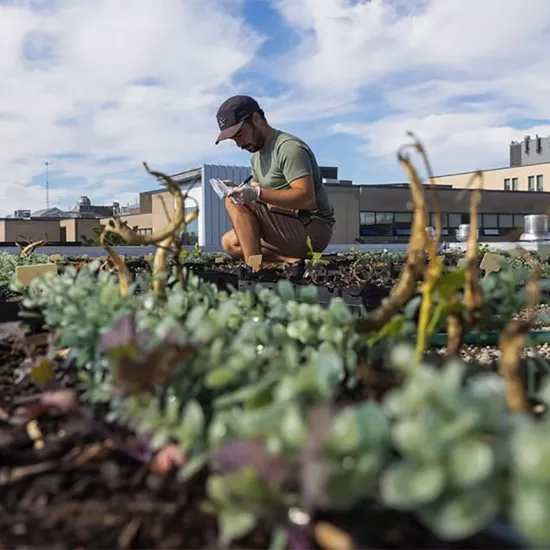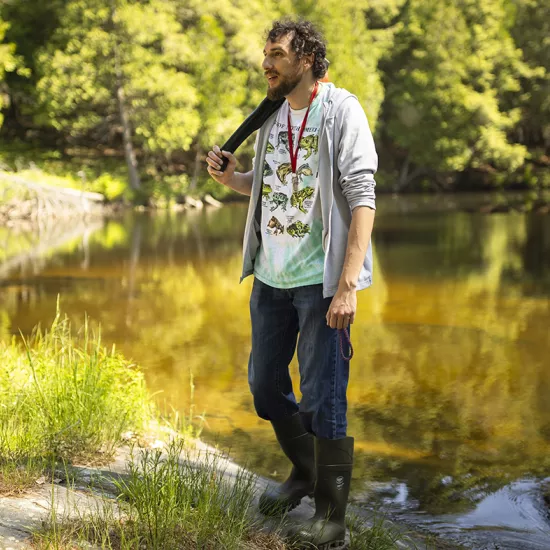UTM volcanologist brings real world learning to the classroom

Something unexpected is happening at U of T Mississauga. The ground has started to rumble with increasing frequency, shaking buildings, rattling desks and leading to mounting concern and confusion.
Is the unsuspecting campus perched atop a concealed volcano?
That’s a question students in a new fourth-year volcanology class slated to start next year may have to contend with as part of a mock scenario. While a volcano secretly hiding beneath UTM is geologically impossible, says UTM Assistant Professor Paul Ashwell, the emergency exercise will give students a taste of what it’s like to work behind the scenes during a potential volcanic crisis.
That means determining what’s happening geologically, communicating information to the public, battling misinformation and deciding when and where to evacuate people. Some of the decisions will have to be made with little available data, just like the real world, says Ashwell, a volcanologist with the Department of Chemical and Physical Sciences.
He should know. Ashwell’s research has focused on better understanding nature’s hot, deadly and unpredictable volcanoes in an effort to help others plan and prepare for eruptions.
While completing his PhD, he studied lava domes, which are created by thicker lava that can’t flow away from the vents. He explains the lava builds up, sometimes creating spires that tower hundreds of feet. These unstable domes act like a cork, and any collapse can lead to an explosive release of trapped gases.
“It happens almost instantaneously,” Ashwell says. “The gas expands rapidly and the only place it can expand is up the mountain, and it does so explosively.”
The unpredictable nature of lava domes necessitates the creation of no-go zones around volcanoes that develop them, forcing people to abandon their homes for years, if not decades.
A better understanding of lava domes could give people affected by them much-needed information to plan for the future.
Working toward filling the knowledge gaps, Ashwell studied one of New Zealand’s ancient volcanoes, Tarawera. An eruption about 130 years ago cut through the lava dome, exposing the interior and allowing Ashwell to get in and examine the structure. He found that, during a collapse, the middle of the dome was exposed, and the area depressurized enough to puff up like popcorn and fill in the dome, hiding the collapse scars. That’s noteworthy, Ashwell indicates, because it could lead some to think that there are no collapse scars so there is no risk of collapse, but in fact they have to look at the dome carefully.
Ashwell says he feels his research just scratched the surface. “At the moment, we have complete uncertainty.”
Now, he is taking his experience and the uncertainty inherent in volcanology into the classroom, where students will not only learn about volcanoes, but also respond to a simulated crisis with the goal of protecting vulnerable populations.
It is just one of the real-world experiences being brought to the classroom as Ashwell expands UTM’s fieldwork program. He has also developed a second-year course that will take students into the field in Ontario, and has introduced a fourth-year class where students will visit the Rockies to practice their geological skills.
“(Fieldwork) cemented my love of geology,” Ashwell says. “You’re doing something. You’re putting the stuff you learned in the lecture into practice.”
This story first appeared in the Spring 2020 issue of M Magazine



